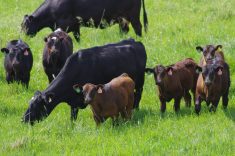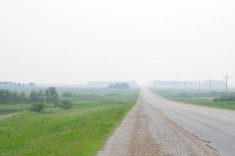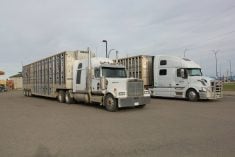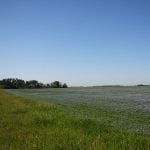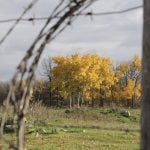This article was originally published at beefresearch.ca. It is reprinted here with the permission of the Beef Cattle Research Council.
For Tyler and Nancy Haraga, March 10, 2018, will forever stand out in their minds.
Read Also

Canadian Beef Check-Off Agency reports on investments and activities
The check-off agency’s work behind the scenes is what ensures cattle check-off dollars are invested wisely, accounted for transparently and deliver measurable value back to producers and importers.
“It was forty below with four to five feet of snow,” says Tyler. It had been a brutal winter, with unrelenting cold and record snowfall that persisted into March. Spring simply refused to come to their operation in southern Alberta, near Skiff.
To give their expected calves a fighting chance against the cold, the Haragas brought in heavy equipment to clear snow off a large area and packed it with clean, dry straw.
As the cold lingered and the calves arrived, Tyler started to notice a few sick calves. “There were a couple with scours, and we never have had scours.” He attributed it to the unusually harsh conditions.
At first, the calves seemed to respond to treatment, but as more calves hit the ground, Tyler realized there was a major problem. “We’ve got a wreck,” he said to Nancy, who was home caring for their children nearly three miles from the farm site.
As the sick calves piled up, they had nearly 40 calves on IV therapy at one time. “It was physically and mentally draining. We were so tired, so depressed,” says Tyler, who along with his father, worked around the clock to save as many animals as they could.
Seeking expertise
The Haragas received many offers of help from friends and neighbours, but they worried that the problem may be contagious and didn’t want to risk passing it to neighbouring operations.
Despite the stress, the Haragas showed resilience and forward-thinking, seeking out options through the diagnostic services unit at the University of Calgary, faculty of veterinary medicine (UCVM).
“We have two different ways we can help,” says Dr. Lindsay Rogers, program outreach co-ordinator of the diagnostic services unit at UCVM. “One way is with diagnostics and the other way is with veterinarians and animal health experts that can go out on farm.”
The diagnostic services unit works with the local attending veterinarian to help in cases where further investigations are required beyond what the local practitioner can provide.
In the Haragas’ case, they diagnosed the fast-acting pathogen infecting their calves as cryptosporidium, or “crypto” for short. Cryptosporidium is a microscopic parasite that has a tough outer shell making it very durable in harsh conditions. The parasite spreads through contact with infected animal feces or contaminated water sources.
“It only takes a tiny little speck to touch that new baby and they’re infected,” says Nancy.
“We were creating a haven for it to spread,” Tyler says, referring to the cryptosporidium parasite present in the bedding pack they had created for their newborn calves.
By the time the Haragas had a diagnosis, the environment was already saturated with cryptosporidium. For that year’s calf crop, supportive care and quickly moving the naive calves and pregnant cows as far away from that straw pack as possible was the best action to take.
While it is distressing that lag time in testing causes an illness to spread, getting a correct diagnosis is pivotal. “We are able to do things to help prevent infection in subsequent years in that herd,” says Dr. Jennifer Davies, a veterinary pathologist at UCVM.
Once the diagnosis is made, the diagnostic services unit team can work with the producer and their veterinarian to plan for the present outbreak and future management of the herd.
Zoonotic disease spread
Cryptosporidium, like many scour-causing pathogens, is a zoonotic disease, meaning the pathogen can infect both animals and human hosts, transmitting from one to another.
“As a pathologist, if I diagnose a case of cryptosporidium in a scouring calf, I’m then making a comment in my note back to the veterinarian: ‘This is a zoonotic disease so if you, or other people such as the producer, have come into contact with these calves and are experiencing any illness it is important to seek medical care and to let them know about the potential exposure’,” says Davies.
The potential for exposure for the Haraga family was high, and the entire family was at risk. So, when their eight-year-old son began showing symptoms, it was no surprise to the Haragas that one of them had fallen ill.
“He couldn’t stand, he was in the fetal position because there was so much pain in his stomach,” says Nancy, recalling the day she rushed her son into urgent care.
“We were living and breathing this stuff for three straight weeks,” says Tyler of their experience with the cryptosporidium pathogen.
When a zoonotic disease is identified in a human, public health becomes involved to help identify the origin and prevent the possible spread of that disease within the population.
“We will help support the producer with strategies and management techniques to try and prevent additional transmission,” says Theron White, disease control co-ordinator with environmental public health at Alberta Health Services.
In the case of the Haragas, the veterinary team, the diagnostic services unit and public health all worked together in what is now known as the “One Health Initiative.” This model of care has all interested parties working as one in a well-connected cluster of resources, each acknowledging the importance of each other to achieve a common goal.
“The One Health Initiative is the understanding that human health, environmental health and animal health are all intricately connected, and we can no longer put each of those in a silo,” says Rogers.
Biosecurity protocols
In the aftermath of this devastating outbreak, many lessons were learned. For example, the Haraga family has become very conscious of where their boots have been and what they may be bringing home.
“We have definitely become more aware; our kids have become more aware,” says Nancy.
They may never know how the pathogen arrived at their farm, but by having a solid biosecurity plan, they can do their best to ensure other diseases cannot follow suit. As for the herd, they know that cryptosporidium has the potential to resurface if conditions are right, so they have a bio-management plan which includes a strategy to ensure this doesn’t happen again.
One strategy they have implemented since the outbreak is a spring calving program. When asked about the results of this decision Tyler says, “Cows are calved out on grass and they get up bouncing.”
Tyler and Nancy will never be able to recover the genetics lost in the outbreak. The financial burden of wrecks like this is often felt for years. However, the Haraga family’s co-operation with a One Health approach, including human and veterinary diagnostics teams to create a plan and prevention strategy, as well as their willingness to share their experience, has been a silver lining.
“Don’t be afraid to talk about it,” says Nancy. “You should be talking about it because somebody somewhere has gone through it and they’re going to know someone who can help you.”
A special thanks goes to Dr. Jen Davies, Dr. Lindsay Rogers, Dr. Eugene Janzen, Dr. Vivien Suttorp, Theron White, and Nancy and Tyler Haraga for their collaboration and participation in this article.



